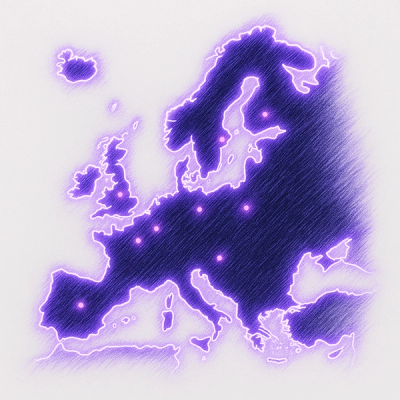Eko Gallery React
A library for integrating the eko gallery into your react based site.
Installation
npm install @ekolabs/eko-gallery-react
OR
yarn add @ekolabs/eko-gallery-react
Usage
EkoGallery Component
The EkoGallery component is used to render the eko gallery on your site. It should replace your existing product gallery component.
import { EkoGallery } from '@ekolabs/eko-gallery-react';
<EkoGallery
className="mb-4"
config={config}
variantId={variantId}
onEvent={onEkoGalleryEvent}>
{/* Your existing product gallery component that will serve as a fallback */}
<CustomerGalley />
</EkoGallery>
This component accepts the following props:
| className | String | Optional. class names to add to the EkoGallery component, for styling purposes for example |
| config | Object | The eko gallery configuration. This object will be published via the eko platform and exposed via an api endpoint (see below) |
| variantId | String | Optional. The selected variant (if applicable). It is used to switch to the relevant variant gallery assets when the product variant changes |
| onEvent | Function | Optional. Handler for events occurred in the eko gallery, for third party tools tracking for example |
When passing the onEvent prop, make sure to use the useCallback() hook to avoid unnecessary re-renders.
Config data fetching
To get the eko product configs, you should use the getEkoProductConfigUrl() function to get the url, fetch the data and pass it to the EkoGallery component.
The getEkoProductConfigUrl() receives the eko sales channel id and returns the url to fetch the eko product configs from.
import { getEkoProductConfigUrl } from '@ekolabs/eko-gallery-react';
const EKO_SALES_CHANNEL_ID = process.env.EKO_SALES_CHANNEL_ID;
const ekoProductConfigUrl = getEkoProductConfigUrl(EKO_SALES_CHANNEL_ID);
const ekoProductResponse = await fetch(ekoProductConfigUrl).then(res => res.json());
const ekoProductConfigs = ekoProductResponse.data;
Analytics setup
Our 1st party tracking tool should be added in order to track events on the site.
The eko analytics snippet
The eko analytics snippet should be added to the site's head tag, here is an example in Next.js:
import Script from 'next/script';
import { getEkoAnalyticsSnippet } from '@ekolabs/eko-gallery-react';
const IS_PRODUCTION = process.env.NODE_ENV === 'production';
render() {
return (
<Html lang="en">
<Head>
<Script id="eko-analytics-snippet" strategy="beforeInteractive">
{getEkoAnalyticsSnippet(IS_PRODUCTION)}
</Script>
</Head>
<body>
<Main />
<NextScript />
</body>
</Html>
);
}
Events
The eko gallery exposes every user interaction event through the onEvent handler.
The event's payload object has the following structure:
| elementid | String | A unique identifier of the element that was interacted with |
| elementtype | String | The type of element. This usually describes the action or function the element serves |
| elementname | String | A textual representation of the element |
Example
const onEkoGalleryEvent = useCallback((event, data) => {
console.log(`*** Received Eko Event: ${event}
*** Payload: ${JSON.stringify(data)}`);
}, []);
Console:
*** Received Eko Event: interaction
*** Payload: {"elementid":"introB-loop-button","elementtype":"start","elementname":"Explore Product"}
*** Received Eko Event: interaction
*** Payload: {"elementid":"KoWmOq-next","elementtype":"next button"}
*** Received Eko Event: interaction
*** Payload: {"elementid":"sequence-button-2","elementtype":"choice button","elementname":"Dimensions"}
ekoWebPixel
The ekoWebPixel API is used to track the events on your site.
Init once via the init() method:
import { ekoWebPixel } from '@ekolabs/eko-gallery-react';
const IS_PRODUCTION = process.env.NODE_ENV === 'production';
useEffect(() => {
ekoWebPixel.init(IS_PRODUCTION);
}, []);
Track events via the track() method:
import { ekoWebPixel } from '@ekolabs/eko-gallery-react';
ekoWebPixel.track('pixel.page_viewed');
ekoWebPixel.track('pixel.product_viewed', { ... });
ekoWebPixel.track('pixel.cart.add', { ... });
ekoWebPixel.track('pixel.cart.remove', { ... });
ekoWebPixel.track('trafficallocation.decision', { ... });
ekoWebPixel.track('pixel.checkout', { ... });
ekoWebPixel.track('pixel.order', { ... });
Report on route changes:
import { ekoWebPixel } from '@ekolabs/eko-gallery-react';
ekoWebPixel.onRouteChanged();



